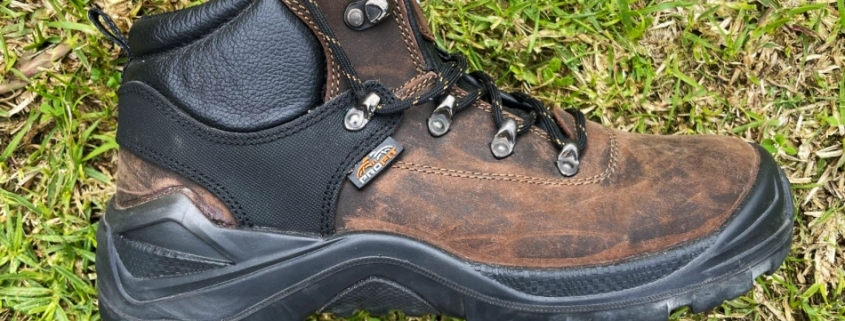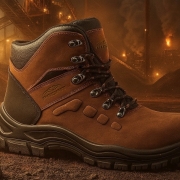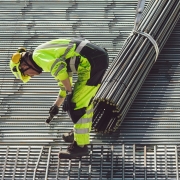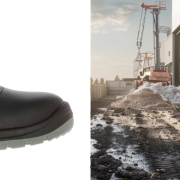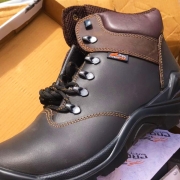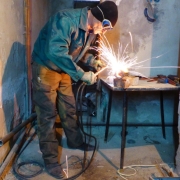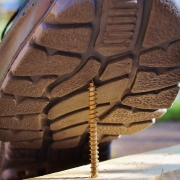Raw Materials in Steel Toe Cap Safety Boots
In the modern industrial landscape, safety footwear plays a crucial role in protecting workers from a variety of hazards. Among the different types of safety footwear, steel toe cap safety boots are renowned for their robust protection against heavy impacts and compression. These boots are engineered to meet stringent safety standards and are integral to maintaining workplace safety across numerous industries, including construction, manufacturing, and warehousing.
The manufacturing of steel toe cap safety boots involves a complex interplay of various raw materials, each contributing to the overall functionality, durability, and comfort of the footwear. This essay delves into the raw materials used in the production of these boots, exploring their properties, sources, processing methods, and their impact on the final product.
Understanding Steel Toe Cap Safety Boots
Definition and Purpose
Steel toe cap safety boots are designed to offer superior protection to the toes and feet. The steel toe cap is a reinforced component embedded within the boot’s toe area, which helps safeguard the wearer from falling objects, heavy impacts, and compression injuries. These boots are a staple in environments where foot safety is paramount due to the potential for significant hazards.
Types of Safety Boots
Safety boots can vary based on their intended use and the level of protection they offer. The most common types include:
- Steel Toe Boots:: Featuring a steel cap for maximum protection.
- Composite Toe Boots: : Made with non-metallic materials like Kevlar or carbon fiber.
- Aluminum Toe Boots: Lighter alternative to steel, providing similar protection.
- Metatarsal Boots:: Providing additional protection to the metatarsal bones. Each type has distinct advantages depending on the specific needs of the workplace.
Each type has distinct advantages depending on the specific needs of the workplace.
Key Raw Materials in Safety Boots
Steel
Composition and Types
Steel used in safety boots is typically carbon steel or alloy steel. Carbon steel is a blend of iron and carbon, with varying amounts of other elements like manganese. Alloy steel, on the other hand, includes additional elements such as chromium, nickel, and molybdenum, which enhance its strength and resistance to corrosion.
Properties and Benefits
Steel is chosen for its excellent impact resistance, high tensile strength, and durability. It can withstand significant forces and is resistant to deformation under stress. These properties are crucial for the protection offered by steel toe caps, making them a preferred choice for many safety footwear applications.
Manufacturing Process
The production of steel toe caps involves several stages:
- Steel Production:: Steel is produced through processes such as the Basic Oxygen Steelmaking (BOS) or Electric Arc Furnace (EAF) methods.
- Forging:: Premium safety boots often involve extensive handcrafting, which is labor-intensive and increases production costs.
- Tempering:: The forged steel is tempered to enhance its toughness and reduce brittleness.
Leather
Types of Leather
The choice of leather in safety boots can vary, including:
- Full-Grain Leather: The highest quality leather with natural grains, offering durability and breathability.
- Top-Grain Leather: Sanded and refinished leather, slightly less durable but more pliable.
- Split Leather:The lower layers of the hide, which are less expensive but also less durable.
Leather Processing
Leather processing involves tanning, which can be done using different methods:
- Chrome Tanning: A faster process that uses chromium salts, resulting in leather that is more resistant to water and heat.
- Vegetable Tanning:An older, more environmentally friendly method using plant-based tannins, which produces stiffer leather with a unique patina.
Rubber and Polyurethane (PU)
Rubber Types
Rubber soles in safety boots can be made from:
- Natural Rubber:Derived from latex, offering good elasticity and durability.
- Synthetic Rubber:Includes various types such as Styrene-Butadiene Rubber (SBR) and Nitrile Rubber, which are more resistant to oil and chemicals.
Polyurethane (PU)
PU is commonly used in the soles of safety boots due to its:
- Lightweight:PU soles are lighter than rubber, reducing fatigue.
- Cushioning:Provides excellent shock absorption and comfort.
- Durability:Resistant to abrasion and wear.
Processing
The manufacturing of rubber and PU involves mixing raw materials, molding, and curing processes. Each type of material requires specific conditions to achieve the desired properties.
EVA (Ethylene Vinyl Acetate)
Properties and Benefits
EVA is known for its:
- Lightweight Nature:Reduces overall boot weight.
- Shock Absorption:Provides cushioning and comfort.
- Flexibility:Enhances the boot’s overall comfort and ease of movement.
Applications in Safety Boots
EVA is used primarily in midsoles and insoles, offering support and enhancing the wearer’s comfort during extended use.
Textile Materials
Types of Textile Materials
Textiles used in safety boots include:
- Nylon:Durable and resistant to abrasions.
- Polyester:Lightweight and quick-drying.
- Blends:Combining different fibers to enhance specific properties.
Applications
Textiles are used in linings, padding, and external fabrics. They contribute to the boot’s breathability, moisture-wicking, and overall comfort.
Additional Materials and Components
Fasteners and Laces
Materials Used
Fasteners and laces are made from:
- Metal:Brass or stainless steel for durability.
- Synthetic Materials:Nylon or polyester for laces, offering flexibility and strength.
Function and Durability
Fasteners and laces are crucial for ensuring the boot fits securely and comfortably. They must withstand significant stress and wear.
Insoles and Padding
Types Of Insoles
Insoles can be made from:
- Foam:Provides cushioning and support.
- Gel:Offers enhanced shock absorption.
- Air-Cushioned:Incorporates air pockets for comfort.
Padding Materials
Padding materials include various foams and gels, designed to enhance comfort and reduce fatigue.
Outsoles
Material Choices
Outsoles are typically made from:
- Rubber:Known for its durability and grip.
- PU:Lightweight and cushioned.
- Composite Materials:Combining various substances to optimize performance.
Features
Outsoles must provide traction, resistance to slipping, and durability under harsh conditions.
Environmental and Safety Standards
Industry Standards
Global Standards
Safety boots are subject to standards such as:
- ASTM:American Society for Testing and Materials.
- ISO:International Organization for Standardization.
- EN:European Norms.
Compliance and Testing
Manufacturers must ensure their products meet these standards through rigorous testing for impact resistance, compression, and other safety features.
Environmental Impact
Sustainable Materials
The use of recycled and eco-friendly materials is becoming more prevalent. Sustainable practices in leather production and material sourcing are important for reducing the environmental footprint.
Waste Management
Efforts are being made to minimize waste through improved manufacturing processes and recycling programs.
Manufacturing Process
Design and Development
Initial Design Considerations
Designing safety boots involves:
- Ergonomics:Ensuring comfort and support.
- Safety Features:Incorporating necessary protection elements.
Prototype Testing
Prototypes are tested for durability, safety, and comfort. This involves various physical tests and user feedback.
Production Steps
Cutting and Shaping
Materials are cut and shaped using precision machinery to ensure accuracy and quality.
Assembly
The assembly process includes stitching, bonding, and integrating various components to create the final product.
Quality Control
Inspection Processes
Quality control involves inspecting each boot for defects and ensuring that it meets safety and performance standards.
Quality Assurance
Ongoing quality assurance measures are implemented to maintain product consistency and reliability.
Future Trends and Innovations
Technological Advancements
New Materials
Emerging materials such as advanced composites and bio-based polymers are being explored for their potential benefits.
Design Innovations
Innovations in design focus on improving comfort, safety, and functionality, including the integration of smart technology.
Sustainability Efforts
Green Manufacturing
Efforts to reduce the environmental impact of manufacturing include adopting green technologies and sustainable practices.
Consumer Trends
There is a growing demand for environmentally friendly and ethically produced safety boots.
Raw Materials For Steel Toe Cap Safety PPE Footwear
The raw materials used in the manufacture of steel toe cap safety boots are critical to their performance, durability, and safety. Understanding the properties and processing of each material provides insight into the complexity of producing footwear that meets high safety standards. As technology and consumer demands evolve, the industry continues to innovate, aiming to enhance both the functionality and environmental impact of safety boots.
For a chat about your work forces safety boot requirements please give us a call on +27 11 892 8030 / 8031 / 8032 or drop an email to organise a call info@profitfootwear.co.za

